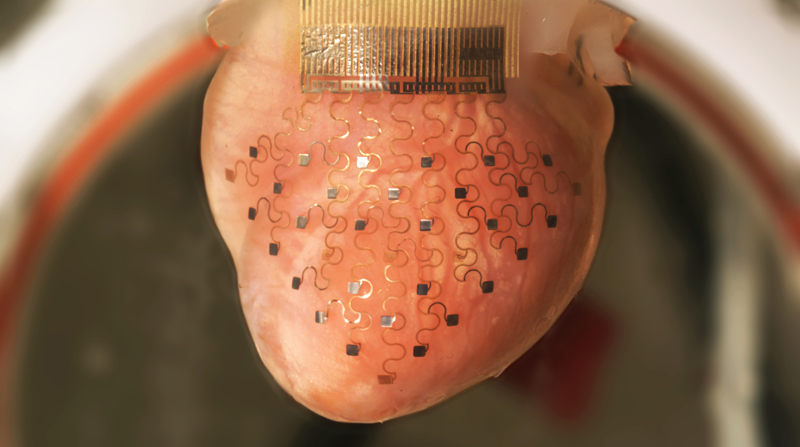
via St. Louis Public Radio
You are looking at a thin, elastic membrane imprinted with an array of sensors and electrodes and designed to stretch over a heart. The cardiac device could one day help prevent heart attacks and replace the bulkier pacemakers and implantable defibrillators of today.
Researchers at the University of Illinois at Urbana-Champaign and Washington University in St. Louis used high-resolution imaging, computer modelling and a 3D printer to create a plastic model of a rabbit’s heart. They then used that as a mold to make a stretchable membrane that fits snugly over the rabbit heart’s surface.
[St. Louis Public Radio via Sploid]
A rabbit heart that has been kept beating outside of the body
in a nutrient and oxygen-rich solution
Igor Efimov, a Washington University biomedical engineer that helped design and test the new device says the specialized electrodes can monitor the heart’s electrical activity and keep it beating at a healthy rate. He tells St. Louis Public Radio:
“When it senses such a catastrophic event as a heart attack or arrhythmia, it can also apply a high-definition therapy, so it can apply stimuli, electrical stimuli, from different locations on the device in an optimal fashion to stop this arrhythmia and prevent sudden cardiac death.”
via St. Louis Public Radio
In the video below, a rabbit heart is kept beating outside of the body in a nutrient and oxygen-rich solution. The research is published in the journal Nature Communications.
If you enjoyed this post, the Sifter
highly recommends: